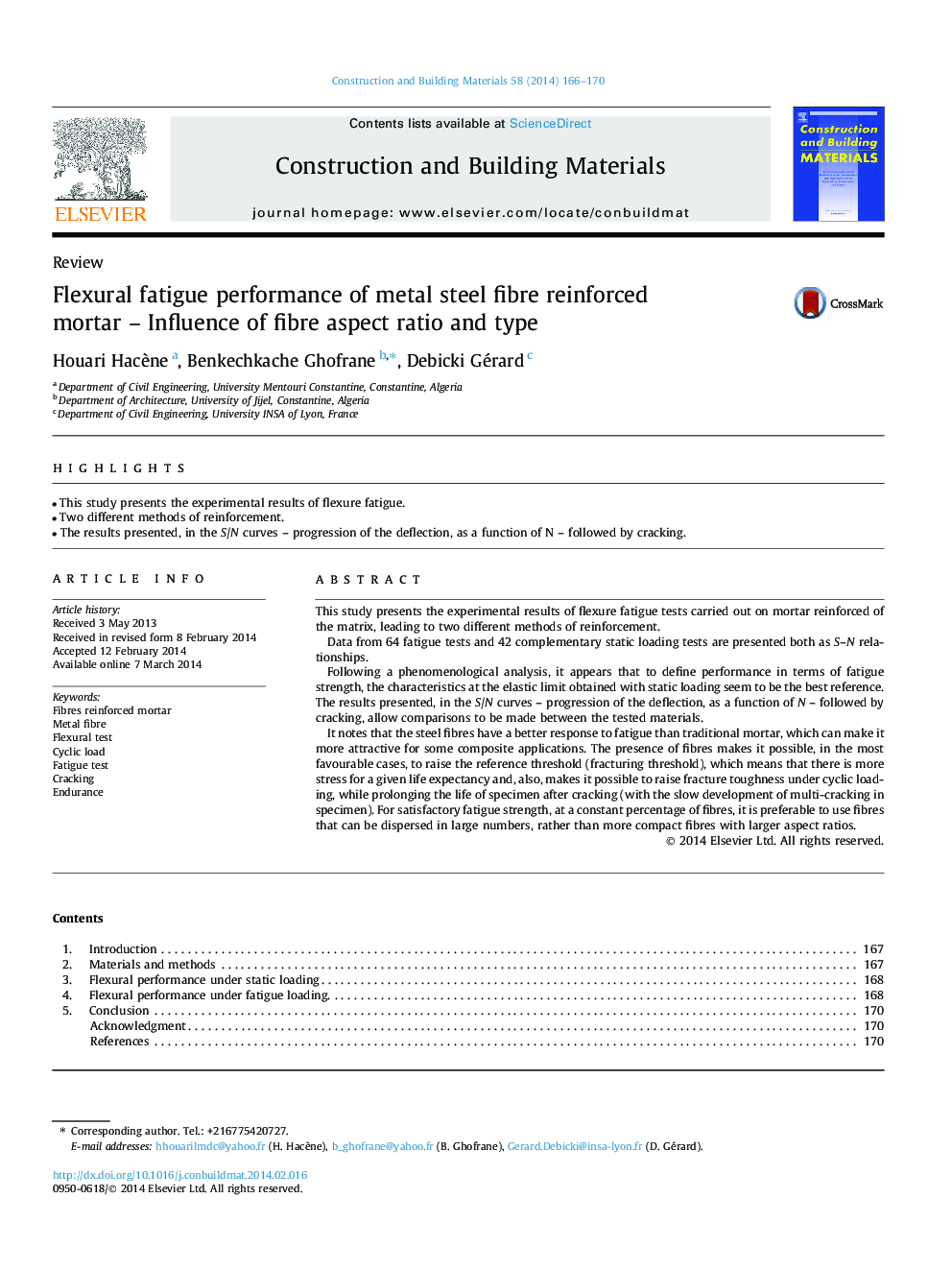| Article ID | Journal | Published Year | Pages | File Type |
|---|---|---|---|---|
| 257671 | Construction and Building Materials | 2014 | 5 Pages |
•This study presents the experimental results of flexure fatigue.•Two different methods of reinforcement.•The results presented, in the S/N curves – progression of the deflection, as a function of N – followed by cracking.
This study presents the experimental results of flexure fatigue tests carried out on mortar reinforced of the matrix, leading to two different methods of reinforcement.Data from 64 fatigue tests and 42 complementary static loading tests are presented both as S–N relationships.Following a phenomenological analysis, it appears that to define performance in terms of fatigue strength, the characteristics at the elastic limit obtained with static loading seem to be the best reference. The results presented, in the S/N curves – progression of the deflection, as a function of N – followed by cracking, allow comparisons to be made between the tested materials.It notes that the steel fibres have a better response to fatigue than traditional mortar, which can make it more attractive for some composite applications. The presence of fibres makes it possible, in the most favourable cases, to raise the reference threshold (fracturing threshold), which means that there is more stress for a given life expectancy and, also, makes it possible to raise fracture toughness under cyclic loading, while prolonging the life of specimen after cracking (with the slow development of multi-cracking in specimen). For satisfactory fatigue strength, at a constant percentage of fibres, it is preferable to use fibres that can be dispersed in large numbers, rather than more compact fibres with larger aspect ratios.
